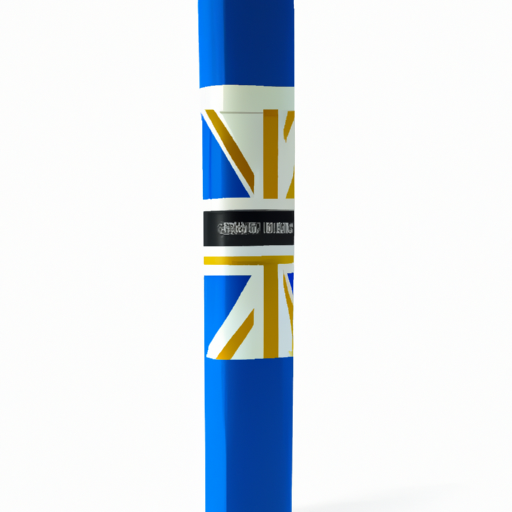
As a British citizen, I have witnessed the impact and prevalence of cigarette smoking in the UK. Despite efforts and campaigns to reduce smoking rates, cigarettes remain a significant part of the British culture. In this article, I will delve into the history, statistics, and regulations surrounding cigarettes in the UK.
History of Cigarettes in the UK
Cigarettes were first introduced to the UK in the 16th century by explorers who encountered tobacco in the New World. However, it wasn’t until the 19th century that the cigarette industry began to flourish in the UK. In the early 1900s, the mass production of cigarettes made them more affordable and accessible to the general public.
During World War I, cigarette use increased drastically among soldiers who were given cigarettes as part of their daily rations. This solidified cigarettes’ place as a staple commodity in British society. In the following decades, cigarette advertising and celebrity endorsements further popularized smoking, making it a symbol of sophistication and glamour.
However, as the harmful effects of smoking became widely known in the 20th century, the UK government took action to regulate and control the sale and consumption of cigarettes.
Statistics on Cigarette Use in the UK
According to the latest statistics from the Office for National Statistics, 14.1% of the UK population aged 18 years and above are current smokers. This translates to around 7.4 million people. The highest rates of smoking are found among lower-income groups, with 24% of those in routine and manual occupations being smokers.
While the overall smoking rate has gradually declined in the UK over the years, there are still concerning numbers, especially among young people. In 2018, 7.6% of 11 to 15-year-olds in the UK reported that they had smoked at least one cigarette in the past week.
The most commonly smoked cigarette brand in the UK is Marlboro, followed by Mayfair and Richmond. However, there has been a rise in the consumption of hand-rolling tobacco, with brands like Amber Leaf and Golden Virginia gaining popularity.
Regulations on Cigarettes in the UK
In the UK, the sale and marketing of cigarettes are tightly regulated to protect public health and prevent young people from starting smoking.
One of the most significant regulations is the ban on smoking in enclosed public spaces and workplaces, which came into effect in 2007. This ban has proven to be successful, with studies showing a decrease in hospital admissions for heart attacks and respiratory problems since its implementation.
Cigarette packaging has also been subject to strict regulations. Since 2017, cigarettes are sold in standardized packaging with graphic health warnings covering 65% of the pack. This has been effective in reducing the appeal of cigarettes, particularly to young people.
The government has also imposed a series of tax increases on cigarettes, making them more expensive for consumers. This is in line with the World Health Organization’s recommendation to use taxation as a means to reduce tobacco demand.
Impact of Cigarettes on Health and Society
It is no secret that cigarettes have a damaging effect on both personal and public health. Tobacco smoke contains over 5,000 chemicals, including nicotine, tar, and carbon monoxide, which have numerous adverse health effects, including lung cancer, heart disease, and stroke.
In the UK, smoking is responsible for around 100,000 deaths per year, and secondhand smoke causes an additional 9,500 deaths. This not only affects the health and well-being of individuals but also has a significant economic impact on the healthcare system.
Cigarette smoking also affects society as a whole. The cost of smoking-related illnesses and deaths amounts to billions of pounds each year. Furthermore, smoking in public spaces and discarded cigarette butts contribute to environmental pollution.
Alternative Products and Efforts to Quit Smoking
In recent years, there has been a rise in the popularity of alternative tobacco products, such as e-cigarettes and heated tobacco products. These products, also known as vaping and heat-not-burn products, claim to be safer alternatives to traditional cigarettes.
The UK has taken a more liberal approach towards these products, with the government promoting them as a tool for smoking cessation. Public Health England has published studies claiming that e-cigarettes are 95% less harmful than traditional cigarettes. However, these products are not without controversy, and their long-term effects on health are still unknown.
Despite the availability of alternative products, quitting smoking remains a challenging task for many individuals. The addictive nature of nicotine, coupled with the psychological aspect of smoking, makes it difficult for smokers to break the habit.
The UK government has implemented various strategies to support smokers in their journey to quit. Free stop-smoking programs, nicotine replacement therapies, and online support are some of the initiatives in place to help smokers kick the habit.
In Conclusion
Cigarettes have a long and complex history in the UK and have played a significant role in shaping British society. However, the harmful effects of smoking have led to strict regulations and efforts by the government to reduce smoking rates. While the prevalence of smoking has decreased, it remains a significant public health issue. As a society, we must continue to address the impact of cigarettes on health and take steps towards reducing their consumption.